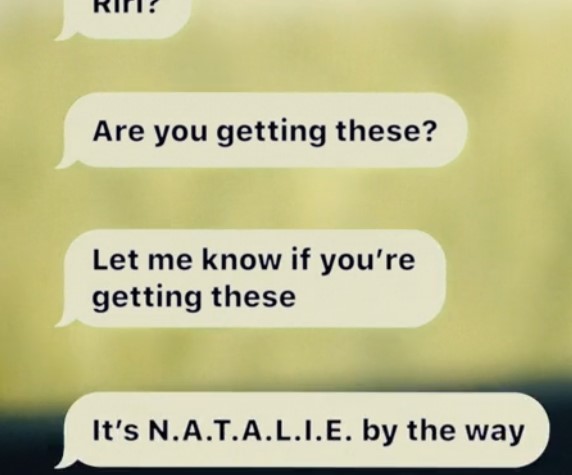Is Pet Cemetery considered a Zombie Movie? Deadly Friend could be a zombie movie too? This one has one of the worst death scenes ever made.
You’d better not be talking about the basketball scene…
I’ve seen 8 or 9 of those. I know I’ve seen some of the Dawn/Day/Night of the (Living) Dead films, but I don’t know which ones.
I propose one addition to the list of zombie movies, although whether it belongs in the top 50 is up to better zombie buffs than me: Serenity. The film follow up to Firefly. They don’t call them zombies, but Reavers are zombies, imo.
Great list! I agree that Day of the Dead is one of the great underrated zombie movies and was happy to see Train to Busan relatively high. On the other hand, I’d pick Jim Jarmusch’s The Dead Don’t Die over a few films on the list. Bill Murray, Adam Driver, Tilda Swinton, Tom Waits, Danny Glover and Steve Buscemi make for a pretty good cast.
Yeah, they get the same carve out they made in the article for the rage virus infected in 28 days/weeks/years later. I mean they didn’t explicitly say it in the article, but they might as well have been describing reavers.
ETA
Should it be “Reivers”?
Maybe it should have been, but canonically, it’s definitely “Reavers”.
It’s too late to shift into reivers now. I accept common usage and now I’m a bereaver.
A few months after this post, but I also want to recommend Reacher for the big dumb fun. Season 2 veers into Avengers meets John Wick levels of absurdity, but as long as you’re not looking for deep meaning, it’s a great watch. Just about to watch S3 and I hear it gets slightly more grounded.
Side note: the ads on a smart TV while watching Prime Video are over the top obnoxious. Not just long but they have embedded links to add items to your cart, which if you accidentally bump your remote you find they added a crate of jerky to your Amazon order.
Loved “Juan of the Dead”! If you can find it check it out. ![]()
Just started watching “Ironheart”.
(Okay, I’m an absolute sucker for this Marvel nonsense, I love it, don’t shame me). ![]()
Anyway, early in episode 2, the ghostly AI of our hero’s best friend does this:


What does this remind me of?
The answer came to me when I was taking the muttly for his evening walk.
It’s a nod to Peter Parker texting Happy in one of the Spidey films.
I love these little Easter eggs.
I hate that they make me so happy (no pun intended).
But hey, I could live in the real world. That would suck.
Saw a couple of articles today talking about the show quite positively. Glad people are enjoying it, i’m still in my “worn out on Marvel” headspace so my interest level in it is pretty much zero. That said don’t take me for a hater, honestly happy to hear its good and hope to enjoy it at some point.
Where are we going, Where have we been?
—
Why We Fight: Prelude to War (Frank Capra, Anatole Litvak 1942)
Summary
Shortly after the Japanese attack on Pearl Harbor and the US’s entering WWII, American film director Frank Capra enlisted in the Army. Already a highly acclaimed director with popular successes such as It Happened One Night (1934), Mr. Smith Goes to Washington (1939), and Meet John Doe (1941), Capra was tasked with creating films which would explain to US troops why the US had entered the war, explaining the histories that led up to Pearl Harbor and the principles which the US was fighting for and against.
This project ultimately became the seven film Why We Fight series. Created mostly from recontextualized Axis propaganda footage, Capra’s series is also propaganda, albeit mostly factual and in service of a far juster cause. The first film, Prelude to War, was considered important enough to be released to the general public and even received an Academy Award for best documentary film.
Prelude concerns itself mostly with contrasting the idealism of the US with the gangsterism of the Axis powers. Japan’s 1931 invasion of Manchuria is credited as the beginning of WWII. Italy’s subsequent war against Ethiopia is mocked as an attempt to pull “the old trick of a foreign war to divert from troubles at home.” Germany is not focused on much, but we do see Nazi book burning footage and German school children singing that Hitler is their savior. Worthwhile for the history minded, but surely without contemporary relevance.
Why We Fight (Eugene Jarecki 2005)
Summary
“On at least one occasion, Eisenhower was heard to say by those in the room, ‘God help this country when somebody sits at this desk who doesn’t know as much about the military as I do.’”
Documentary about the military-industrial complex, made during the Iraq War. (And during the Afghanistan occupation, although that receives scarcely any mention. This seeming neglect is arguably justified by the film’s well-founded assertion that Iraq had been a planned target well before the September 11 attacks and is therefore more pertinent to the film’s argument.)
While Capra’s film answers its implicit titular question with hymns to democracy, freedom, and justice, Jarecki takes a more critical look, beginning with President Eisenhower’s farewell address warning of the dangers of the military-industrial complex. Over the course of the film, it is argued that this complex actually consists of four components, the professional military, the “defense” industry, Congress, which almost invariably approves funding for the military because the funds benefit so many districts, and think tanks, unelected organizations which develop the policies which justify the use of the military.
Ultimately, Jarecki implicitly argues that while in WWII US democracy was imperiled by forces abroad, now it is imperiled by forces from within. While perhaps a bit overly discursive, a very good look at this important issue.
(The film is also potentially available in better quality from Alexander Street, via your local university library.)










